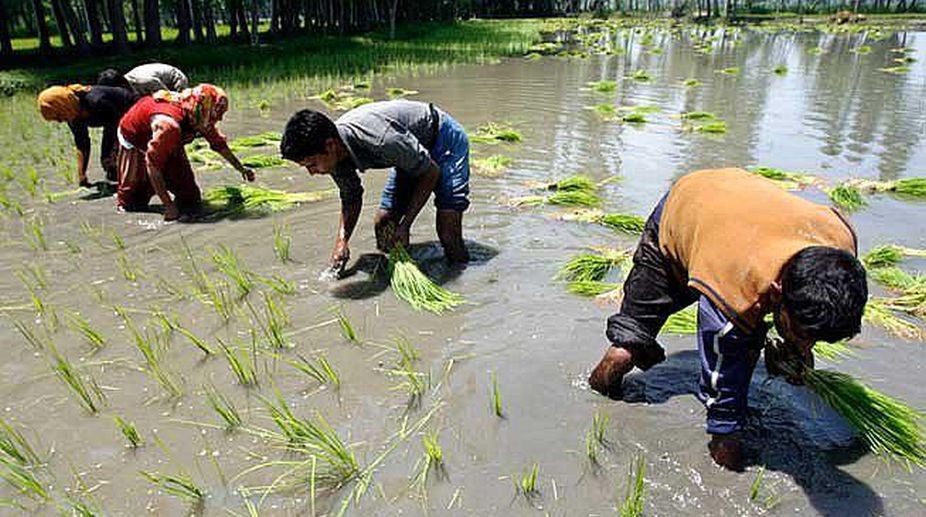In the last few years, there are areas in India where efforts are being made to revive the soil. Many farmers have accepted the damage chemicals can cause to the fertility of soil and even without being environmentalists; those people prefer the policy of farming with nature.
In Punjab, a cow urine-based preparation has been introduced to revive microbial action in the soil; this is in addition to mulching, which increases soil bacteria, microbes and earthworms.
One has heard of vermicompost. The earthworm species for producing compost include Eisenia foetida and Eudrilus eugeniae. Ramesh Vaid and his brother, JC Vaid, represent families who have encouraged organic farming in their endeavours in a state of Northern India.
They have exemplified that any product organically farmed will receive the attention of overseas buyers. A huge demand awaits them.
We must comprehend the role of earthworms in our farms because it is their contribution, which will give Northern India the sobriquet of “India's Food Bowl”.
The earthworm — a part of our planet for more than 50 million years — can make it possible to crystallise the country's ambitions. David Attenborough is a remarkable naturalist and he has traced the origins of species of earthworms, spiders and the highly endangered Pitcher Plant in the Philippines, to an unimaginable day and age. It was while he was researching earthworms that he “stumbled” onto a grasshopper never identified before, which was named in his honour, Electrotettix attenboroughi.
This specimen, which was trapped in resin, was 20 million years old. But it was “younger” than earthworms. Our policy of vermiculture is to basically generate earthworms and use them to convert organic waste into fertiliser — this process decomposes organic food waste, thereby converting it into nutrient-rich material. Composting is a practice going back to pre-historic times.
It has been referred to in the Bible and in the Bhagavad Gita. It was as late as 1940 when Albert Howard, a Civil Service officer in India, conducted the first trials involving vermiculture and organic farming in our country. Coming back to earthworms, they are the most ancient terrestrial group of insects and includes almost 3,000 species.
The smallest is barely an inch in length and the largest is a ten foot “giant” in Australia. It was after the last Ice Age 10,000 years ago, that earthworms were restricted to certain regions, as in the valleys of three great civilisations — the Indus, Euphrates and Nile.
Crops grew without major cultivation practices because of the rich soil and presence of earthworms. Charles Darwin wrote in his research, “If micro-organisms built the soil it is not man but worm. Indeed it is doubted whether there are many other animals, which have played so important a role in the history of the world as have these lowly organised creatures. The earthworm is the greatest plowman, a creature greater than a horse, more powerful than an elephant and more important to man than a cow.”
Despite a comprehensive bibliography of research papers on earthworms prepared for the Darwin Centenary Symposium on Earthworm Ecology, it has been neglected and mistreated during the course of modern farming practices.
Our farmers and agriculturists will realise an earthworm forms microorganisms within its digestive tract, which, through its castings, forms the fundamental layer for rich humus.
It was a French scientist, Andre Voisin, whose brilliant book, Soil,Grass and Cancer, articulates that apart from the earthworm being integral to agriculture; it is also the foundation of all civilisations. They are the greatest promoters of vegetation; they perforate and loosen the soil, and their worm castings are the best possible fertiliser for our food grains. They are tenacious diggers capable of burrowing down to depths of 15 feet.
They make “tunnels”, which actually form an avenue for roots. In its own incredible manner it has deepened or loosened the top soil layer of the Earth. Peter Tompkins illustrates their function by explaining that in an orchard in autumn earthworms can dispose 90 per cent of fallen leaves or stems.
He states that an acre of good agricultural land can produce over five tons of castings in a year. In simple terms this interprets that the farmer applies mulch and unwanted organic matter on his land.
This is essential for the earthworm to work on. In return the farmer is gifted with a high percentage of rich humus-based fertiliser.
All said and done, now is a relevant time to remember the guardian of our soil as without it agriculture could well have been impossible.











